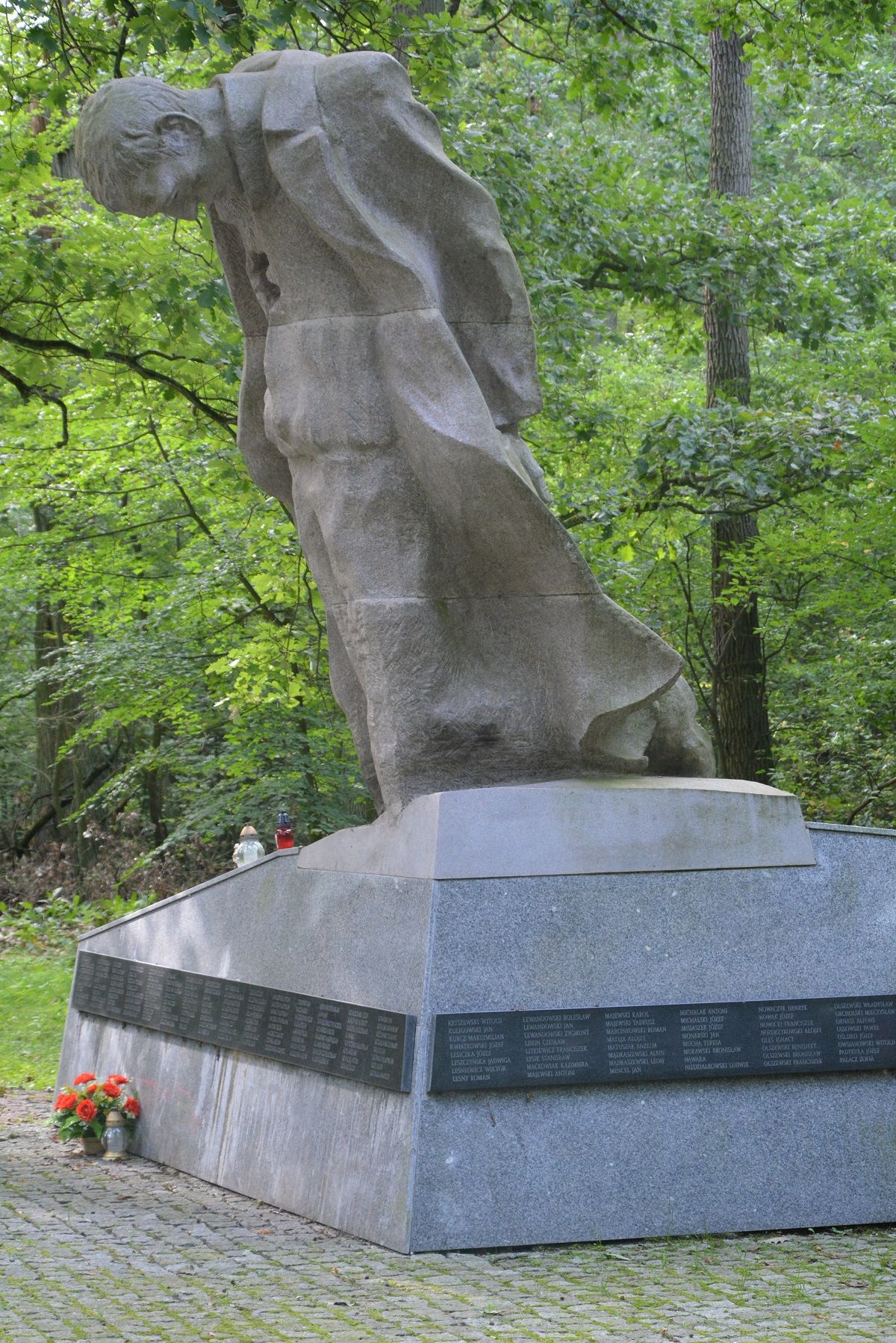The city of Lwów (today's Lviv, Ukraine) was a scenery to
hundreds if not thousands acts of ‘modern’ barbarity by the hands of Germans as
well as Soviets during WWII. In July 1941, 25 Polish professors along with
their family members were executed by Nazi German authorities. This was another
example of elimination of Polish elite members in un unfinished row of
Intelligenzaktion in the course of WWII.
Why Germans wanted to eliminate such people first wherever
their troops appeared since 1 September 1939 on the territory of Poland?
Nazi
Germans had thought that the elimination of the higher strata of Polish society
i.e. people who were well educated, who knew how to differentiate between the Good
and the Evil and were simply of high moral standards, would have guaranteed them
‘the rule of law’ uninterrupted by acts of sabotage, diversion or existence of
any resistance. They were wrong as the Polish people, whatever their education,
knew that there was no way for collaboration, no way for servile behaviour
towards the occupant.
Images source: Internet
SS-Brigadeführer Karl Eberhard Schöngarth, responsible for the detention and deportation of Cracow univercity’s professors (Sonderaktion Krakau), showed up in Lwów to carry on the project of elimination of Polish elite members. His ‘excellent’ experience in this field proved very helpful in Lwów. Th executions were carried out under his command by an Einsatzgruppe unit (Einsatzkommando zur besonderen Verwendung).
It is also confirmed that the executions were assisted by Ukrainians wearing German uniforms. (Further reading on Ukrainians during WWII and their aspirations to have an independent state under Soviet and German rule: K. Lanckorońska „Those who trespass against us. One woman’s war against the Nazis”, published in London).
The list below comprises the names of the captured academics
and their relatives executed in July 1941:
„Prof. Dr Antoni Cieszynski, age 59 Chairman of Stomatology,
UJK
Prof. Dr Wladyslaw Dobrzaniecki, age 44, head of Surgery,
PSP
Prof. Dr Jan Grek, age 66, , Chairman of. Internal Diseases,
UJK
Maria Grekowa, age 57, wife of prof. Grek
Doc. Dr Jerzy Grzedzielski, age 40, Chairman of Ophtalmology
UJK
Prof. Dr Edward Hamerski, age 43, Chairman of Internal
Diseases, AWL
Prof. Dr Henryk Hilarowicz, age 51, Chairman of Surgery, UJK
Priest Dr teol. Wladyslaw Komornicki, age 29, relative of
Mrs Ostrowska
Eugeniusz Kostecki, age 36, husband of prof. Dobrzaniecki's
housekeeper
Prof. Dr Wlodzimierz Krukowski, age 53, Chairman of
Electrical Measurements, PL
Prof. Dr Roman Longchamps de Berier., age 59 Chairman of
Civil Law, UJK
Bronislaw Longchamps de Berier, age 25, PL-graduate, son of
professor
Zygmunt Longchamps de Berier, age 23, PL-graduate, son of
professor
Kazimierz Longchamps de Berier, age 18, Secondary
school-graduate, son of professor
Prof. Dr Antoni Lomnicki, age 60, Chairman of Mathematics,
PL
Adam Miesowicz, age 19, Highschool graduate, grandson of
professor Solowij
Prof. Dr Witold Nowicki, age 63, Chairman of Pathological
Anatomy, UJK
Dr med. Jerzy Nowicki, age 27 , senior assistant of the
Chair Hygiene, UJK, son of professor
Prof. Dr Tadeusz Ostrowski, age 60, Chairman of Surgery ,
UJK
Jadwiga Ostrowska, age 59, wife of prof. Ostrowski
Prof. Dr Stanislaw Pilat, age 60, Chairman of Petrol and
Earth-Gas Technology ,PL
Prof. Dr Stanislaw Progulski, age 67, Chairman of Pediatrics
UJK
Ing. Andrzej Progulski, age 29, son of professor
Prof. Dr Roman Rencki, age 67, Chairman of Internal
Diseases, UJK
Dr med. Stanislaw Ruff, age 69, , Chairman of Surgery,
Jewish Hospital taken from prof. Ostrowski's flat with his family
Anna Ruffowa, age 55, wife of dr Ruff
Ing. Adam Ruff, age 30, son of dr Ruff
Prof. Dr Wlodzimierz Sieradzki, age 70, Chairman of Forensic
Medicine, UJK
Prof. Dr Adam Solowij, age 82, ret, Chairman of Obsterics
and Gynaecology, PSP
Prof. Dr Wlodzimierz Stozek, age 57, , Chairman of
Mathematics PL
Ing. Eustachy Stozek, age 29, ass. PL, son of professor
Emanuel Stozek, age 24, PL-graduate, son of professor
Dr iur. Tadeusz Tapkowski, age 44, taken from professor
Dobrzaniecki's flat
Prof. Dr Kazimierz Vetulani, age 52, Chairman of Theoretical
Mechanics PL
Prof. Dr Kasper Weigel, age 61, , Chairman of Measurements
PL
Mgr iur. Jozef Weigel, age 33, son of professor
Prof. Dr Roman Witkiewicz, age 61, Chairman of Mechanical
Measurements PL
Prof. Dr Tadeusz Boy-Zelenski, age 66, writer, Chairman of
French Literature at the University, arrested in prof. Grek's flat
Katarzyna Demko, age 34, teacher of English, taken from
apartment of Prof. Ostrowski
Doc. Dr Stanislaw Maczewski, age 49, Chairman of Obsterics
and Gynaecology, PSP
Maria Reymanowa, age 40, nurse taken from apartment of Prof.
Ostrowski
Wolisch, age 40-45, businessman taken from prof. Sieradzki's
flat
Prof. Dr Henryk Korowicz, age 53, Chairman of Economics, AHZ
Prof. Dr Stanislaw Ruziewicz, age 53, Chairman of
Mathematics, AHZ
Prof. Dr Kazimierz Bartel, age 59, Chairman of Design
Geometry, PL, former prime minister of Polish Republic (three terms of office),
who has been arrested already on 2nd July 1941.
The acronyms for Univercities are:
AHZ, Akademia Handlu Zagranicznego (Academy of Foreign
Trade);
AWL, Akademia Weterynaryjna we Lwowie (Academy of Veterinary
Sciences in Lwow);
PL, Politechnika Lwowska (Lwow Institute of Technology) ;
PSP, ;
UJK, Uniwersytet Jana Kazimierza (The University of the King
Jan Kazimierz)”. (1).
Read more:
- K. Lanckorońska „Those who trespass against us. One woman’s war against the Nazis”, published in London.






























